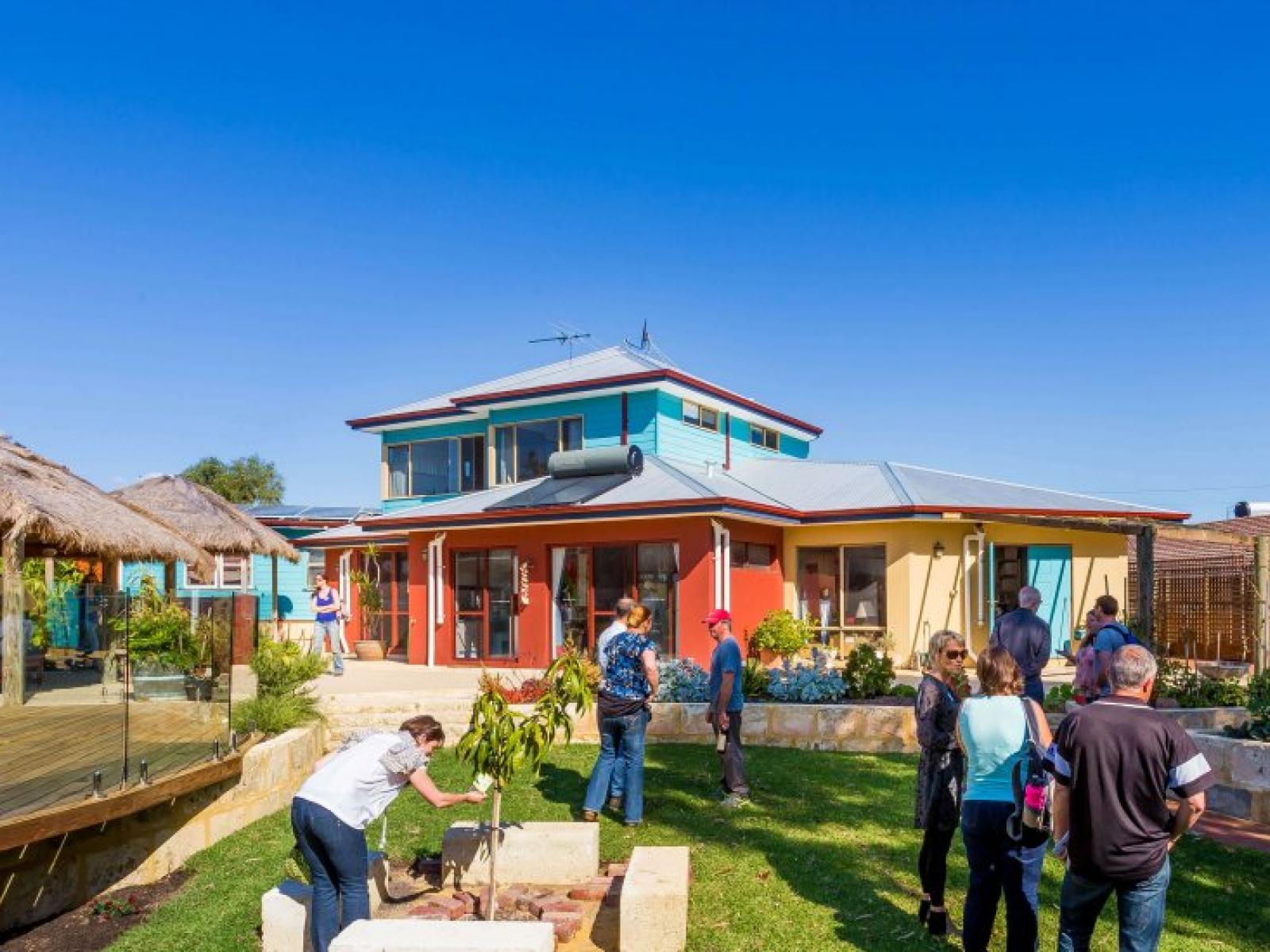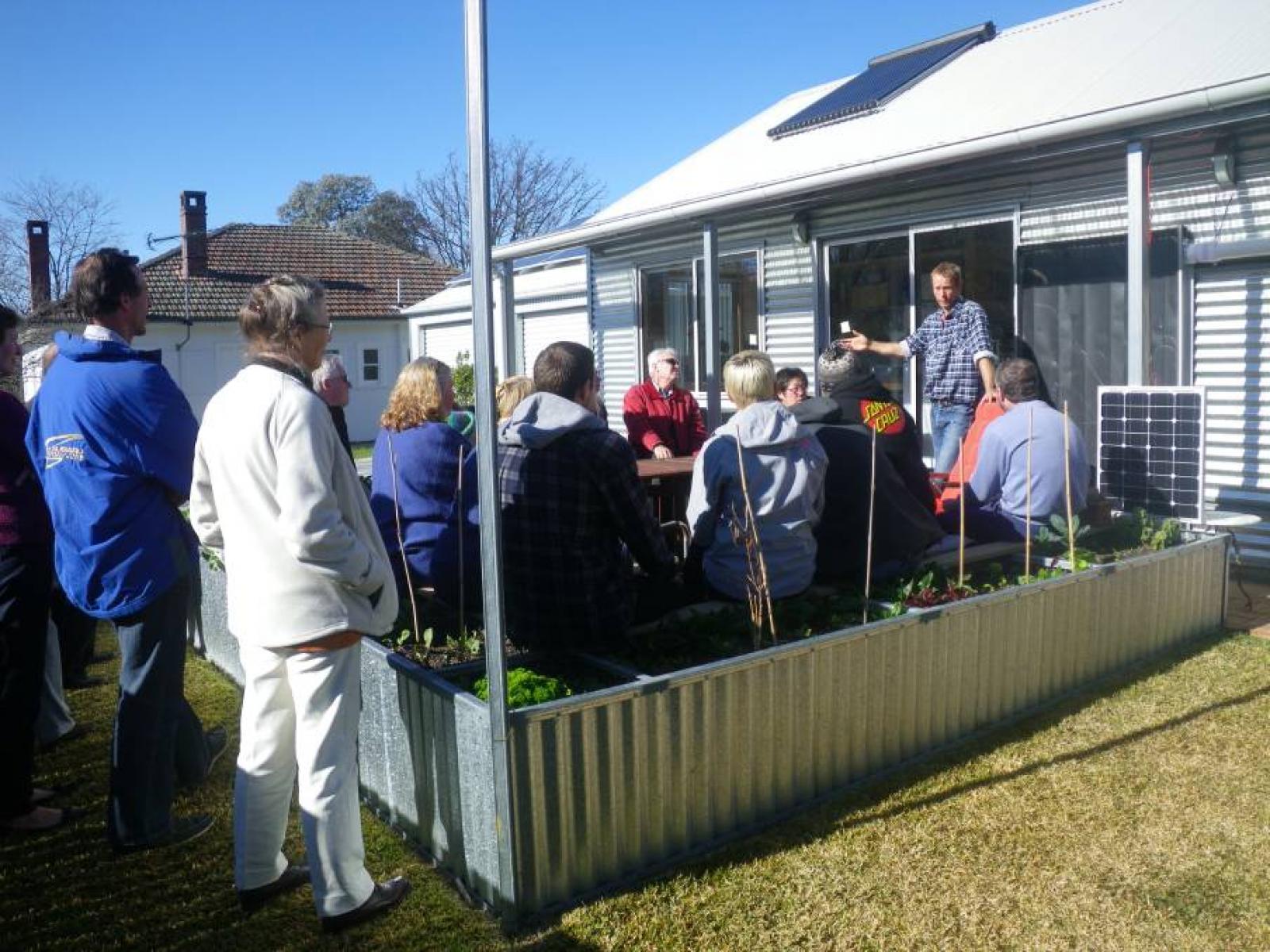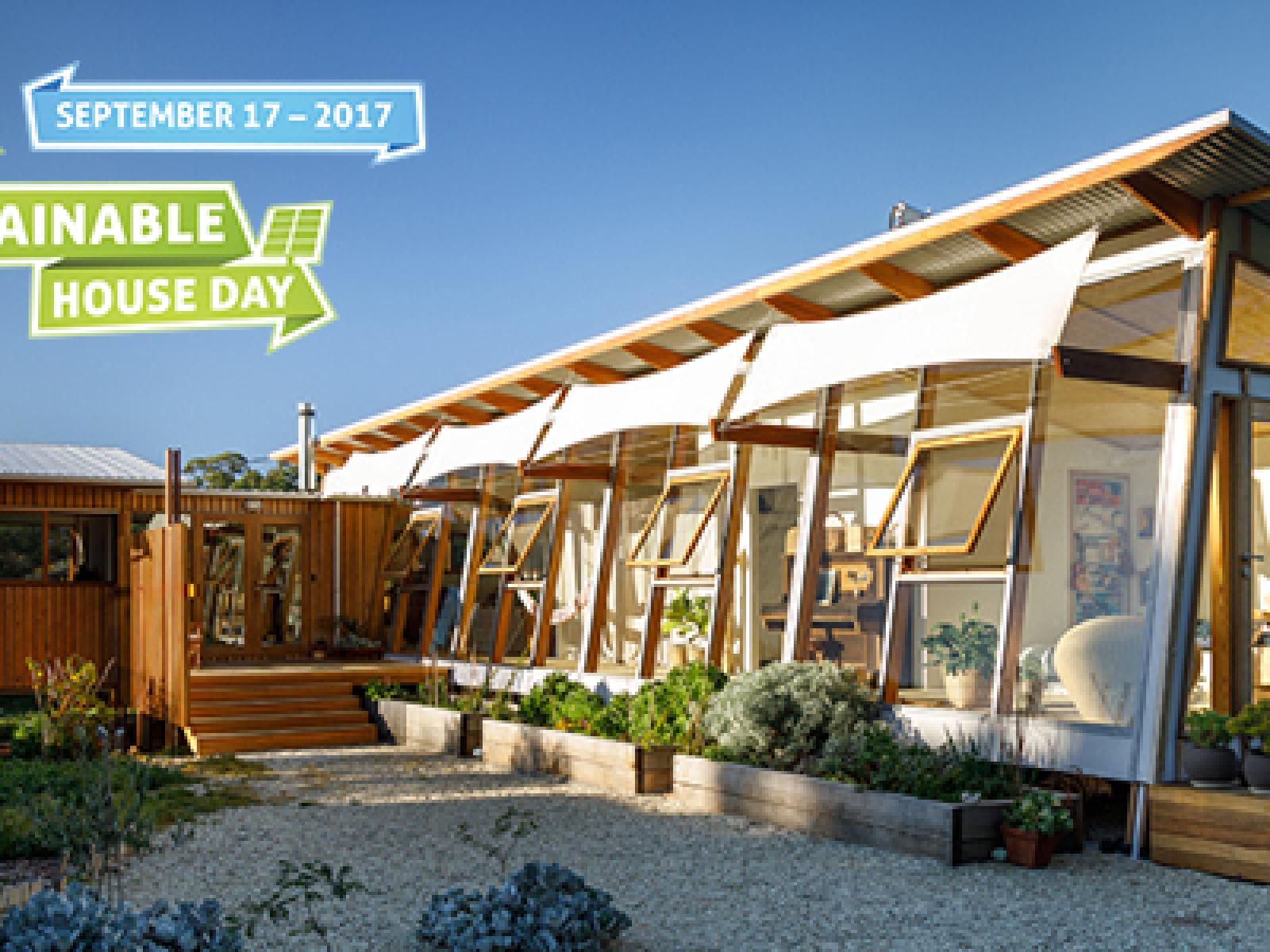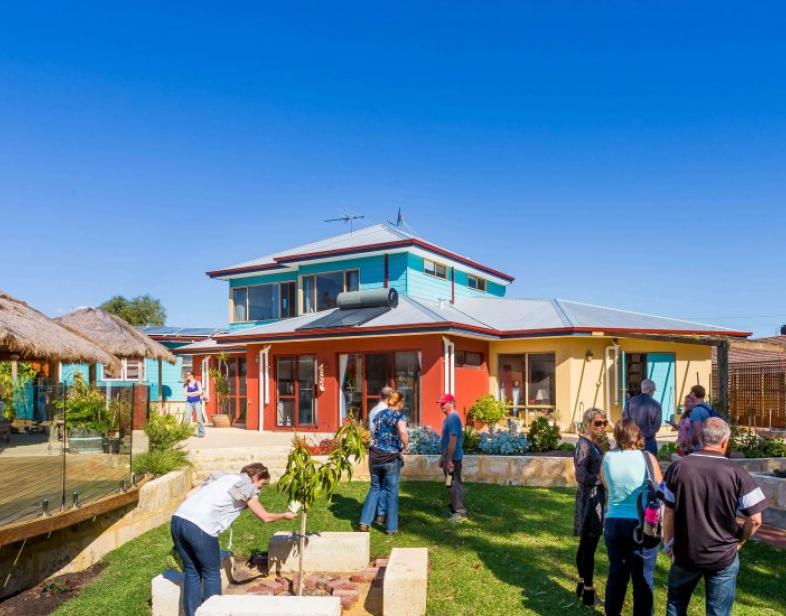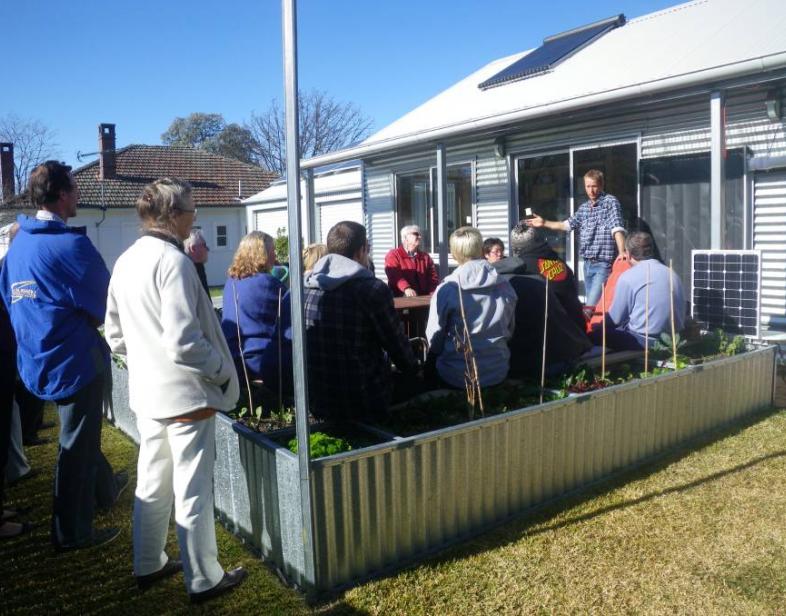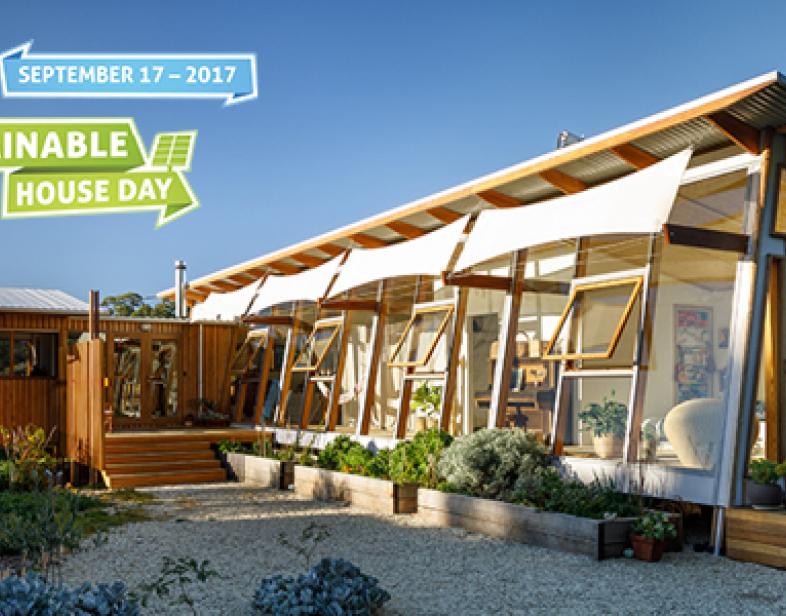An Overview Of Our Solution
Hosted by the Alternative Technology Association (ATA), Sustainable House Day is a not‐for‐profit environmental event across Australia providing an opportunity for people to visit sustainable homes and see first‐hand how to make their own homes more environmentally friendly, comfortable to live in and cheaper to run.
Attendees almost unanimously reported that seeing sustainable homes in person was their preferred method of learning about sustainable home renovations and builds. Second to this were face‐to‐face conversations with the renovators and homeowners, followed closely by conversations with design and/or building practitioners. It is this peer‐to‐peer sharing of knowledge and skills that makes Sustainable House
Day a trusted, vibrant and effective method of sharing sustainable values and practices.
- Population Impacted: 29,000
- Continent: Oceania
Context Analysis
Households generate at least one fifth of Australia’s total greenhouse gas emissions. The products, technologies
and knowledge to make our homes and personal transport more energy efficient already exist, so reducing the carbon emissions from Australian households is a key opportunity to reaching our goal of achieving a net zero-emissions world. Reducing the carbon intensity of our houses also has extra benefits of saving residents money, as well as making them healthier and more comfortable to live in. However, many Australians are overwhelmed by the amount of information on what actions they can take in their own home or the benefits those actions may have.
This is why Sustainable House Day is so important. On September 17, 2017 more than 29,049 people visited 206
homes across Australia open for SHD, to see real-world examples of sustainable design and products in action.
Describe the technical solution you wanted the target audience to adopt
The primary technical solution that we are targeting is for attendees to learn about sustainability solutions from other households and to integrate practical actions into their own builds, renovations and rentals.
On Sustainable House Day, September 17th, 2017, 29,049 visits were recorded at 206 homes across Australia, an increase of 68% from 2016, and the event successfully garnered a significant level of media interest.
Over 55% of people attended Sustainable House Day for the first time and 63% of attendees were not members of any sustainability networks prior to the event making Sustainable House Day’s reach critical in reaching a new audience of homeowners and renters.
Type of intervention
Describe your behavioral intervention
Currently in Australia, new homes and alterations/additions need to achieve a minimum 6 Star energy rating under the National Construction Code (NCC). However, it is well-recognised that:
• Many homes are not performing to standard once built
• There is an increasing body of evidence that the economically optimal level to which new housing should be designed is above the mandatory minimum 6 Stars. This has not been strengthened since it was introduced in 2010.
• Australia has fallen behind international standards for residential energy efficiency. In Europe and the UK basic quality-control safeguards already exist to protect consumers form poor building performance, including mandatory tests for building air leakage.
The intention of Sustainable House Day is to showcase a variety of tools, technologies and techniques that people can use in their own homes and communities to improve energy and water efficiency. There are additional benefits including improvements in comfort, health and reductions in household utility bills.
To get an accurate measure of adoption, the ATA partnered with the CRC for Low Carbon Living to assist with pre and post event surveys. The primary belief in the power of this approach is that attendees value the opportunity to see, experience and talk about different solutions without any sales pressure. This has been backed up by survey results (see below).
As needed, please explain the type of intervention in more detail
Sustainable House Day provides social incentives as follows:
1) Homeowners get to showcase their personal approach, demonstrating leadership to their peers and volunteering their knowledge
2) Attendees have unique access to actions and knowledge, and their follow-up actions have effects on their local and social networks
Choice architecture provides a strong incentive, as attendees are not exposed to market pressure or disinformation. People can learn about a variety of solutions, make their own choices about which to employ and approach the market (or take a DIY approach) with confidence.
Describe your implementation
Sustainable House Day provides people with the unique opportunity to see sustainable techniques and technologies in a variety of homes. It also allows visitors to engage directly with homeowners and ask questions without any market pressure or other objectives apart from peer-to-peer learning.
In the months leading up to the day, activity is focused on publicity and generating interest, especially for homeowners who are willing to open their homes on the day. We also focus on back end systems such as website functionality and data collection.
Other key activities include:
• Organising volunteers
• Ancillary activities such as bus tours
• Ensuring maps and house details are current
On the day there is a flurry of activity, including answering questions, monitoring web and social media channels, and general event troubleshooting.
To ensure that the quality of the event remains high the ATA uses surveys in the run-up to the event, on the day and after the event. The post-event survey is used to measure and report on response and uptake.
Key wins include pro-bono public relations activity that resulted in potential reach of 160,000,000 and nearly 100,000 website visits in three months. Support from local partners is also essential as it directly drives local interest to the demographics we are seeking to reach.
Two key obstacles:
• When taking over the event, the website was not properly configured for the amount of traffic
o This was overcome by working with the website developer and moving to a new server
o We are currently rebranding the organisation and will include SHD into our overall brand architecture
• Second, we have been unable to identify a ticketing and donation solution that is suitable for this activity.
o We have made internal attempts to locate or create a solution, but we have not settled on one for 2018
o We will explore new options as we implement a robust CRM
External connections
Sustainable House Day 2017 was sponsored and supported by:
20/21 Creative
Porter Novelli
RACV
Bank Australia
NSW Planning & Environment
Home Base Perth
Solar Dwellings
Lottery West
Sustainability Victoria
Victoria State Government
Powershop
Sustainable House Day has provided us with access to new relationships in sectors where we wouldn't normally have access, but providing a national audience eager to learn about sustainability practice has opened that window. The RACV is a good example, as they have not previously been known for their sustainability interests but they do wish to engage with their members on the topic and pick up potential members within this demographic.
Who adopted the desired behaviors and to what degree?
Surveys of attendees and homeowners were an important part of measuring the day. In measuring behaviour change, we primarily weigh attendee responses. Some key impacts:
• 25.8% of SHD attendees had already taken action in including sustainable design, features and appliances in renovations or builds since attending SHD (within one month)
• 61.9% of attendees indicated they are now planning to include sustainability in their
renovation/build since attending SHD 2017
• 82.1% of attendees shared their learning at SHD with friends and family face to face
• 79.65% of attendees believe that sustainable features to your home will increase its market value
• 73.0% of attendees rated seeing how sustainable features were used as ‘very useful’
• 63.2% of attendees rated speaking to home owners as ‘very useful’
• 77.2% of attendees feel that SHD is the only avenue you can ask questions of homeowners.
How did you impact natural resource use and greenhouse gas emissions?
The ATA took over SHDfrom another group two years ago and has been making significant improvements to the extent and impact of the event since. Last year our pre- and post-event surveys was a first step toward measuring and reporting on impact, for example results indicated that the day inspired over 7,000 actions in the month after.
The ATA is taking significant steps to be the leading organisation for household and community sustainability in Australia. One of our goals is to complete our theory of change and create a robust internal impact measurement and reporting system. We will begin the work next year, including SHD 2019.
Our team has in-depth experience with modelling and will combine this with survey results to quantitatively measure the benefits of this unique opportunity. We know that we are having a significant effect on practical actions for climate change with additional household and community benefits, but we have not done enough – yet – to provide statistics.
What were some of the resulting co-benefits?
While there are some restrictions on homes (e.g. no unfinished homes, no sales), many of the homes that are open on the day have a variety of sustainability features that inspire, educate and even surprise attendees. Some of these co-benefits include:
Water:
"I am interested in Grey Water Treatment Systems and would like to be better informed about Reed Bed design and performance."
"water saving gardens"
Gardening/food production:
“Keeping honey bees in your back garden.”
“passive solar veggie growing.”
“Green house built off a kitchen”
Community/social:
“That sustainable homes have become appealing to much larger number of average people.”
“The volume of information/advice freely available.”
"We moved into this new house only 3 months ago. We hoped we might meet some interesting local folks. We certainly did--which was a big plus for us.”
Local economy:
“Made contact with a builder I will follow up with.”
“That a sustainable home can be built on a project home budget.”
Sustainability
Sustainable House Day relies primarily on sponsorship from corporates and state/local governments. The main expenses are the costs of staff, marketing/media and website. The latter is not insignificant as we have had to invest in reinforcing the site and putting systems in place to manage the rush of traffic near the event day.
The ATA also benefits significantly from pro bono support from the web designer and public relations company. A large number of community groups and partners supported SHD on the day and in local promotion.
While some homeowners ask for a gold coin donation to support charities of their choice, one option for income is to ask for a donation at ticketing or have a set cost for house visits.
Return on investment
For 2018, the expected budget is $120,000, with in-kind contributions of $30,000.
We expect to increase both the number of open homes and the total number of visits. In 2017 we had 206 homes open and logged over 29,000 visits. For 2018 our goal is 250 open homes and 40,000 visits.
Based on last year's survey result - "61.9% of attendees indicated they are now planning to include sustainability in their renovation/build since attending SHD 2017" - we can extrapolate that 24,000 (40,000 * .6) people across Australia will take some sustainability action in their own build or renovation. At a total cost of $120,000, this equates to $5 per action (120,000 / 24,000), a very low cost for significant, sustainability-focused actions.
How could we successfully replicate this solution elsewhere?
To our knowledge, this event hasn't been replicated elsewhere but it could be done relatively easy, especially if starting at a local or state level.
Requirements include:
A person(s) to manage the event
A website to manage submissions for houses, attendee registration, and details for the day
Good communication and media skills, plus tools to support homeowners and attendees
Fundraising/relationship skills to obtain fiscal and pro bono support
A sizeable network to garner homeowner and attendee participation
To reduce costs, a large network of potential volunteers is essential. Pro bono assistance for web design and management, and marketing/PR is beneficial. The work of our PR firm gained us reach that far surpassed the national population.
Local government and like-minded group support will help to ensure that the right people are reached, including potential houses and volunteers.
Ancillary events throughout the year can help maintain the requisite buzz.
